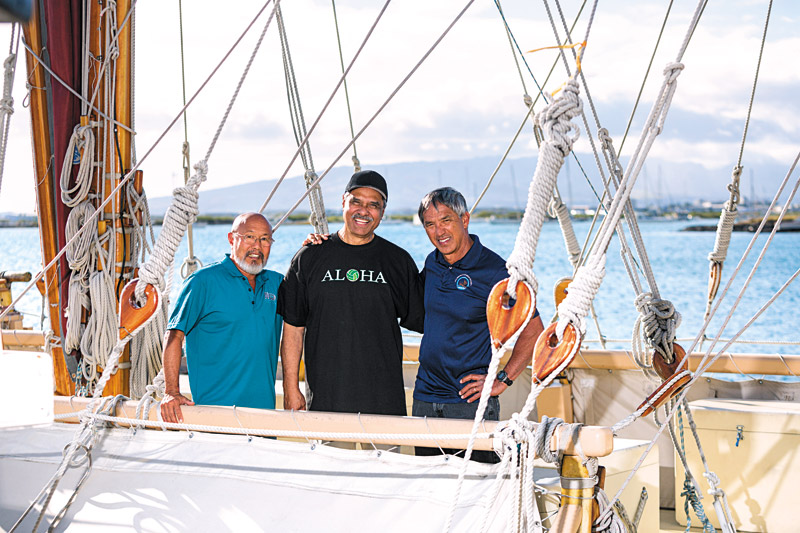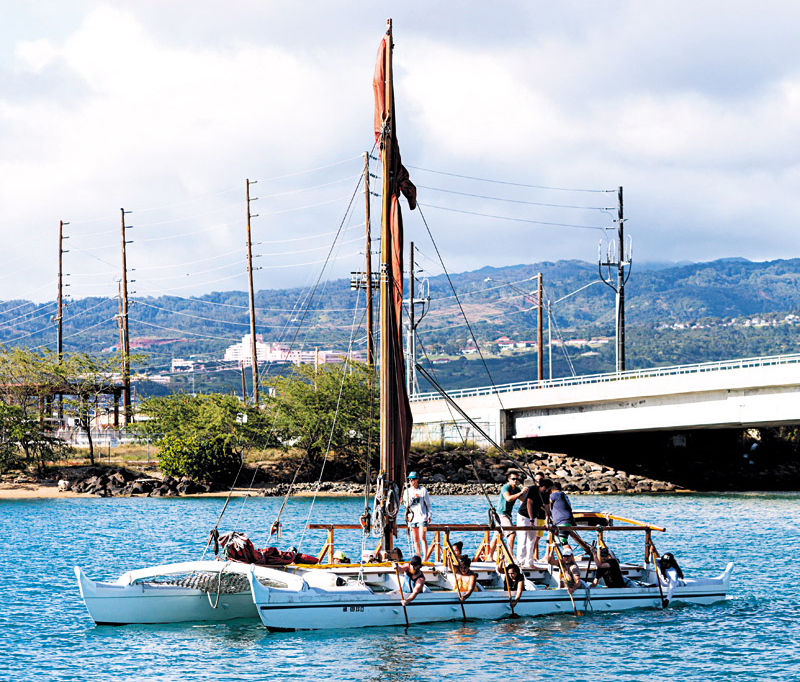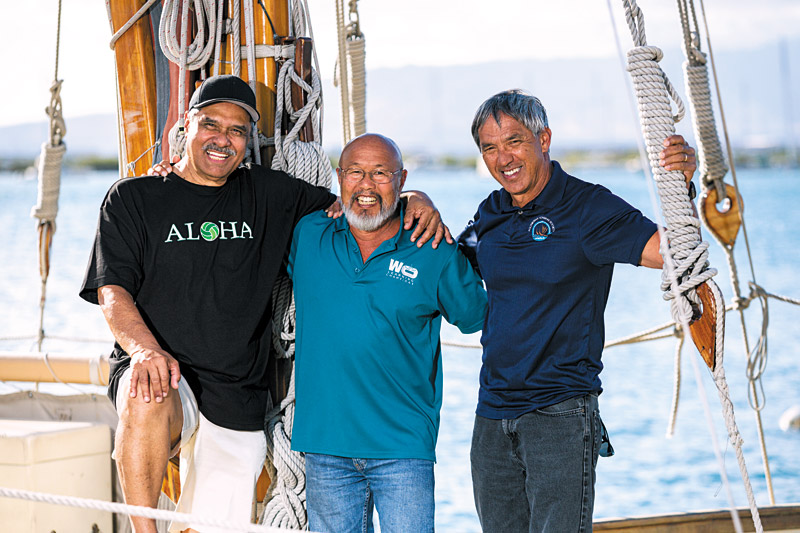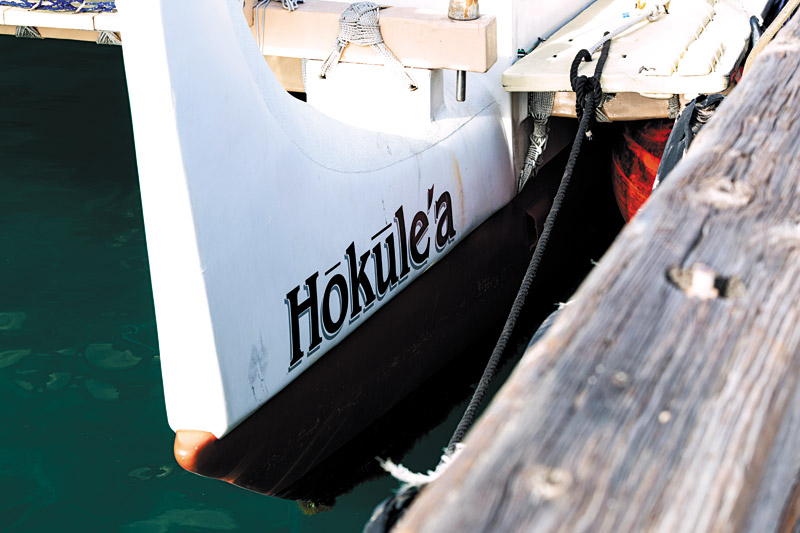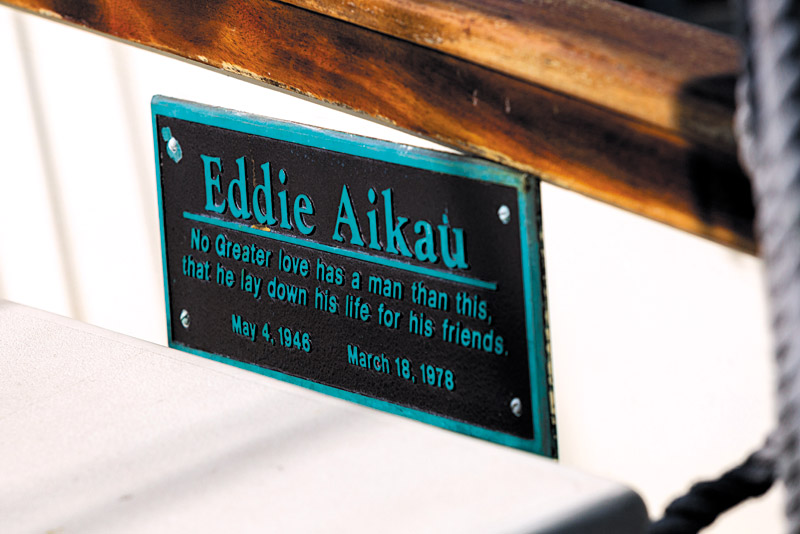Keiki Hop Aboard HÅkÅ«le’a
The community is invited to support youngsters from Kaua‘i and Ni‘ihau, who are interested in visiting the famed voyaging vessel when it docks at NÄwiliwili Harbor later this year.
In a decades-old friendship formed out of respect, and constantly renewed by a shared love of culture, community and history, Nainoa Thompson, Chucky Boy Chock and Dennis Chun are now looking to pass their knowledge and leadership skills to the next generation of voyagers.
To that end, the trio have made it their mission to ensure every keiki from Kaua‘i and Ni‘ihau gets to visit Hōkūle‘a, Hawai‘i’s famed voyaging canoe, when it is expected to return to Nāwiliwili Harbor in December.
Chun, a professor of Hawaiian studies at Kaua‘i Community College, describes Hōkūle‘a as a “significant icon in the revival of Hawaiian thought and practice.” In his mind, the launching and successful voyage of the vessel to Tahiti and back in 1976, using only traditional methods of navigation, was a milestone in the resurgence of Hawaiian culture.
“I believe if this had not occurred, we would still be discussing whether or not Hawaiians/Polynesians accidentally discovered and settled Polynesia,” he adds. “The oral traditions of voyaging would be regulated to ‘myths,’ and we would be regarded only as paddlers, surfers and swimmers, not as an epic voyaging culture.”
Thompson, for his part, first got involved with Hōkūle‘a by chance when it was being constructed in 1974.
“I was in the right place at the right time,” says Thompson, a Pwo navigator. “I was very young and just hanging around the great pioneers, leaders and visionaries who were building this canoe. I was there, and it was an amazing privilege to be there from the beginning. It has been the most influential part of my life, being with Hōkūle‘a and the voyaging family.”
Polynesian Voyaging Society, led by Thompson as president, is founded on a legacy of Pacific Ocean exploration. The organization “perpetuates the art and science of traditional Polynesian voyaging and the spirit of exploration,” and focuses on creating and promoting educational programs that inspire students and their communities to care for each other and Mother Nature.
Amongst the places Hōkūle‘a has sailed to include South Africa, Cuba, Nova Scotia, New York, Virginia and Florida. Thompson, who’s been at the helm for some time now, has spent a lifetime voyaging throughout the world. Yet, his most cherished memory remains one close to home.
“My favorite memory was having the beautiful miracle of being able to be alongside my father, Pinky Thompson, and his work to bring justice and dignity to Hawaiian people,” he recalls. “I was able to follow him and learn from him about the importance of feeling proud of who you are and where you come from.”
It is this importance of knowing one’s purpose and place that resonates with Chun, too.
“The teaching of these areas (of culture and history) enable us to understand the past in order to grasp the present and to address the future,” he says. “How do we know where to go, if we don’t even know where we started from?”
Thus, their mission is to teach the keiki of Kaua‘i and Ni‘ihau about their voyaging past so that they may know where to go in the future.
Thompson views himself merely as support staff in the service of that goal.
“I’m here as a servant to them, the great leaders of Kaua‘i,” he says of Chun and Kaua‘i Museum executive director Chucky Boy Chock. “The work that they are doing for the love of their place, island, community and children is what inspires me to help them the best I can and enable them to fulfill their mission, which comes from their love for their home and community.”
For Chock, the historical and cultural significance of Hōkūle‘a is a heartfelt one that defines what being a wayfinder truly means.
With an optimistic outlook, Chock believes the cancellation of the Hōkūle‘a voyage to Kaua‘i last month turned out to be a blessing for several reasons. First, the harbor was to be dredged, and second, the state Department of Education did not have the funds to transport the estimated 9,000 keiki to make the visit. Finally, the weather took a turn for the worse, and the sail was called off.
“Now that she will return to Nāwiliwili in December, this will allow us time to call upon private donors (and) corporate donors, people willing to kōkua to raise funds needed to have every keiki on Kaua‘i and Ni‘ihau step onto Hōkūle‘a and feel her aloha,” Chock says. “Hōkūle‘a is for children. It’s their wa‘a!”
For Thompson, the collective work is simply part of a greater movement and global community.
“(I am) amongst the thousands of voyagers and navigators, not only on canoes, but (also) people doing things of goodness to better the earth,” Thompson adds. “This is when you have to restore your belief and energy to do what you know you have to do. Voyaging is not an option. It’s an obligation and responsibility.”
Hōkūle‘a next docks at Nāwiliwili Harbor in December 2019, and those interested in contributing to help keiki from Kaua‘i and Ni‘ihau visit the vessel can contact Chock at 245-6931 or director@kauaimuseum.org.

